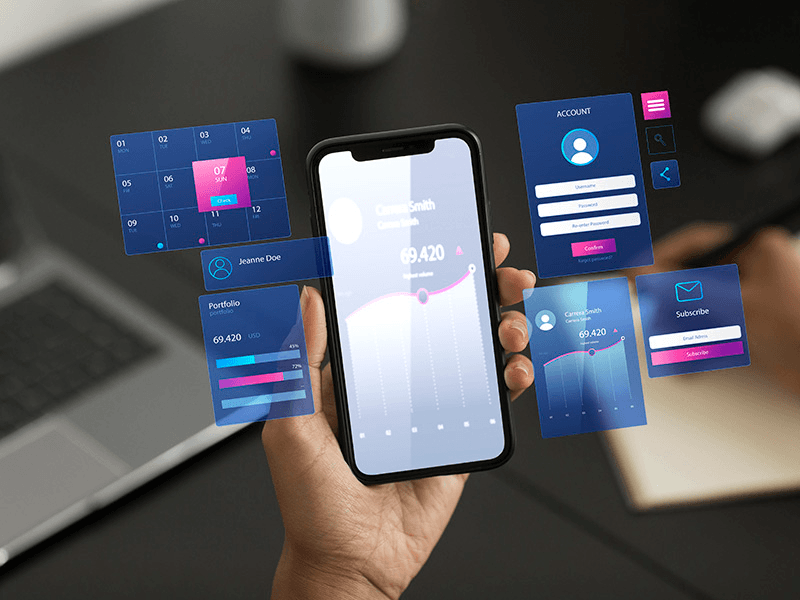Track down the prescribed procedures and methodologies to protect your Android application. Here, we’ll give you some security advice to help protect your Android app. It is essential to keep mobile application security up to date. Versatile application engineers ought to follow best practices to get the information in an Android application. Nowadays, people use a lot of smartphones and tablets, so protecting people’s sensitive information is important. Because Android is one of the most widely used mobile operating systems in the world, it poses security risks. You should foster techniques to get and safeguard the Android application from programmers, cyberattacks, and information breaks. We will share a few prescribed procedures for getting Android application security, including encryption, approval, and validation.
With mobile apps becoming essential in daily life, ensuring their security is crucial to protect sensitive data and maintain user trust. As cyber threats evolve, developers must adopt best practices like secure coding, data encryption, and strong user authentication to safeguard applications. Regular security audits and staying updated with the latest threats are also key to preventing vulnerabilities. By prioritizing security from the start, developers can build apps that not only offer functionality but also provide robust protection against risks in today’s digital landscape.
What is mobile application security?
As an expert on standby, you may be using compact applications for use every day or during crises. Versatile cutting-edge applications, generally called “applications,” are redesigning responder security, enlightening episode the board, enabling convenience, and further creating effectiveness. Nonetheless, the ongoing application climate presents huge dangers to you, your data, and the association you and your colleagues rely upon to impart.
The developers employ various strategies and methods to safeguard sensitive data and shield mobile applications from vulnerabilities. These innovations give security to the mobile application highlights. The developers use authentication and authorization, secure coding practices, and data protection technologies. In addition, they work on platform and network security features and regularly update the app to remain compatible. Safer application highlights give a superior client experience and forestall unapproved access or cyberattacks.
Why is it necessary to use technologies to secure mobile apps?
Giving versatile application security is expected for some reasons. The organizations put resources into portable applications and need trust and notoriety. They must provide security in their mobile apps to earn the trust of their users. They need to guarantee security, information assurance, and consistency with guidelines. Costly breaches are prevented by enhanced security.Finance, medical services, and web-based business stages need severe information security and assurance.
The designers can foster creative advancements by building new highlights and further developing the application’s security for the executives and client experience. Secure portable applications provide income creation, client procurement, and maintenance. Best security practices will foster the best confidence in your portable application among clients. They will use your app with confidence. Security measures help your business grow, give you a competitive edge in the market, and protect sensitive user data. Strong security measures boost business growth and user confidence.

Security Best Practices for mobile apps
Encryption
Versatile application developers use encrypted Android applications to safeguard client data. Encryption is the most widely recognized approach to changing text or data into a code plan. This procedure prevents unauthorized users from accessing the portable application. The data can be changed into an extraordinary design with the right unscrambling. Encryption ensures the confidentiality and safety of data when it is transmitted or stored in a portable application. You can safeguard mobile applications by using Android Keystore, Spongy Castle, and Bouncy Castle. The encryptions ought to be able to compete with the difficult locations for digital crime.
Authentication
You should get approval for more grounded security to assert the client’s character prior to allowing permission to use the application’s features. Consider secret expression constraints and two-factor endorsement (2FA). A client’s personality is confirmed utilizing this technique, and unapproved access is forestalled. Originators use biometrics like facial affirmations, fingerprints, passwords, security tokens, and other complex approvals, with somewhere around two taking a look at procedures. Keep updating the application. To keep your mobile application safe, you need to keep it up-to-date and advanced.
Secure passwords
Apply significant secret term arrangements for enhanced Android application security. Acknowledge strong passwords that combine different blends of promoted and lowercase letters with digits and excellent characters. Execute a secret phrase strategy to create more grounded passwords and accelerate client security.
Moreover, it guarantees the security of organizational correspondence and improves information classification. Also, keep local information safe.
Authorization
One more critical part of application security is approval. The product allows vast quantities of clients access to the application’s elements and capabilities. It is best to thwart unapproved access and protect the client’s data. The creators are using extreme endorsement rules to confine client access. The construction for dark shortcomings is regularly checked, and potential security bets are fixed. They use third-party libraries that have been tested for security. A proactive security method gives clients a solid application experience. They check the application security on the right with standard testing and address the issues that have any possible security concerns.
Secure code rehearsals
Keep checking your application and revising it with the latest security patches for extra data creation. Securely store sensitive data in capacity arrangements. Direct ordinary code reviews to detect any issues and fix them rapidly. Additionally, advanced devices can be used to search for code flaws. Oversee checking examinations further to develop security estimations and instruct clients about security. In case of gadget misfortune, use elements to wipe the information remotely. Moreover, it focuses completely on reviving the functioning systems for the clients.
Conclusion
In an era where mobile apps are a vital part of everyday life, securing these applications is more critical than ever. Cyber threats continue to evolve, and with them, the risks to user data and app integrity increase. Implementing best practices for mobile app security is essential to safeguard sensitive information and protect against breaches that can damage both the app’s reputation and user trust.
Key best practices include secure coding techniques, encrypting sensitive data, and using strong authentication methods. Developers must adopt a proactive approach by following secure coding standards and regularly updating their codebase to address newly discovered vulnerabilities. By integrating encryption protocols, sensitive data is protected both at rest and in transit, mitigating risks of unauthorized access. Multifactor authentication (MFA) also adds a vital layer of security, making it more difficult for attackers to compromise user accounts.
Additionally, regular security testing, such as penetration testing and code reviews, plays a crucial role in identifying vulnerabilities before they can be exploited. Organizations should also stay up-to-date with the latest security threats and trends, enabling them to apply timely updates and patches to the app. User education is another key component—by raising awareness of common threats like phishing and encouraging secure behavior, app developers can empower users to protect themselves.
In conclusion, securing mobile apps is a continuous and collaborative process. It requires a combination of best practices, such as secure coding, data encryption, and robust authentication, alongside regular security audits and user education. By prioritizing security throughout the app’s lifecycle, developers and businesses can protect their applications from threats, uphold user privacy, and foster trust in an increasingly digital world. As technology advances, staying vigilant and proactive will be essential to keeping mobile apps secure against emerging risks.

